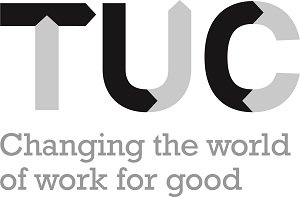General Council Statement 2023
General Council statement: Reinforced Autoclaved Aerated Concrete (RAAC)
The Reinforced Autoclaved Aerated Concrete (RAAC) scandal in our schools and public buildings has been years in the making. Unions have consistently warned government about the danger of crumbling classrooms – but have been dismissed and ignored. It shouldn’t have taken another roof collapsing for the government to act.
RAAC presents considerable risks to the safety and stability of public buildings and infrastructure - including commercial buildings - and the people who work in and use them. In recent years, several buildings, which otherwise showed no sign of defect, have collapsed due to RAAC deficiencies. Had the structures been occupied at the time of collapse it is likely lives could have been lost.
People deserve to know the buildings they work in and use are safe.
RAAC has a lifespan of just thirty years, yet buildings containing RAAC installed in the 1950s are still in operation. Even the government’s own Office of Government Property have said; ‘RAAC is now life-expired and liable to collapse”
Despite knowing the overwhelming evidence and catastrophic risks, the government repeatedly blocked requests for information on the safety of school buildings.
We must end the culture of secrecy.
There is an urgent need to establish a comprehensive register documenting the use of RAAC in buildings and construction projects. This register should be publicly available and include detailed information about the specific applications of RAAC, structural designs, and locations of these structures. Such a register will serve as a crucial tool for tracking and monitoring potentially hazardous structures.
Proper investigation into the use of RAAC is paramount to identifying high-risk structures and mitigating potential dangers. Thorough structural assessments and monitoring protocols should be implemented to evaluate the condition of RAAC elements in affected buildings and infrastructure. This investigation should involve collaboration between construction professionals, engineers, regulatory bodies and trade union safety representatives.
Checks must be carried out by experts, e.g. specialist structural engineers, and the cost of this in the public estate must be met by central government. So too, must the cost of any remedial work required. It is not reasonable to expect duty holders to carry out or commission this work themselves or from their own budgets.
Remediation strategies, including structural reinforcement, maintenance, and regular inspections, must be implemented promptly to address identified risks. Ongoing monitoring programs should be established to detect and rectify RAAC-related issues as early as possible. Repairs, removals and rebuilds must be instigated urgently where required with support to construction workers to ensure such work is undertaken safely and with appropriate training.
Broader picture of neglect and deterioration
The RAAC crisis that has been exposed in our schools is just the tip of the iceberg. This is part of a broader story of neglect and deterioration across the entire public estate, including in our hospitals, prisons, libraries, community centres, council housing stock and court buildings.
People are using, working and living in buildings that are at risk from multiple hazards including RAAC, asbestos and other severe structural defects that pose a serious threat to life.
For thirteen years, the government has raided capital budgets across the public sector in their pursuit of austerity. This short-termism has starved departments of the vital funds they needed to keep buildings safe and fit for purpose, exposing hard-pressed public sector workers to risks to their safety as they try to carry out their work in cramped, defective and hazardous environments.
We urgently need the government to commit to a long-term, sustainable programme of capital investment that repairs and rebuilds our public estate. Government departments must be able to plan for the medium to long-term and any immediate investment should be focused on:
- A plan and timescale for ridding our public buildings of RAAC, asbestos and other structural hazards
- Ensuring our public buildings are fit for purpose
- Refurbishing our public buildings ready for net zero
Ministers must act now in the national interest.
